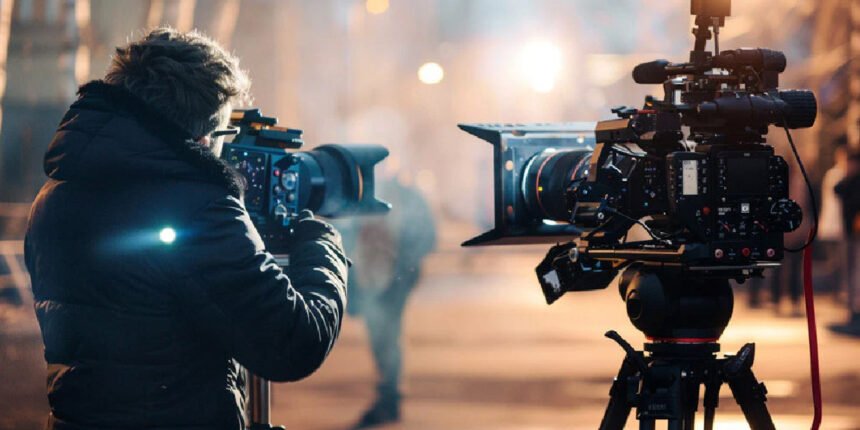What Is Photeeq Lens Flare?
Photeeq Lens Flare is a specialized digital editing effect designed to replicate the natural optical phenomena of lens flare in photography and digital images. Originally, lens flare was seen as a technical flaw caused by bright light sources reflecting inside a camera lens, but it has evolved into a purposeful artistic effect. Photeeq Lens Flare transforms this visual element into a user-friendly plugin that allows anyone—from beginners to professionals—to add cinematic streaks, glowing orbs, or subtle sunbursts to their photos. Unlike basic filters or cheap overlays, Photeeq Lens Flare is engineered with realism in mind. It mimics how real light behaves inside high-end camera optics, creating flares that look authentic and not digitally faked.
This plugin was once bundled with Photeeq’s lightweight photo editing suite and is still used today in Adobe Photoshop, Lightroom, and the web-based Photopea editor. What makes Photeeq Lens Flare unique is its balance between technical precision and artistic flexibility. While many flare tools apply flat, overdone light blobs, Photeeq focuses on real-world light behavior, giving your images a professional, cinematic feel even if they were shot on an overcast day.
The Evolution of Lens Flare in Photography and Film
The origin of lens flare dates back to the earliest days of photography, when intense light sources, like the sun or bright lamps, would cause unintended artifacts in images. These appeared as halos, rings, or streaks of light due to reflections within the lens assembly. At first, photographers viewed these flares as errors, often trying to avoid or mask them during shooting or editing. However, the perception began to shift with the advent of cinema. In the 1970s, directors like George Lucas and cinematographers such as Douglas Trumbull started using lens flares as a stylistic device to bring emotional tension, realism, or futuristic aesthetics to scenes—especially in movies like “Star Wars.”
This marked a creative turning point, turning a flaw into an expressive tool. In modern photography and digital art, lens flare is now an intentional element, frequently added in post-production for emotional depth, lighting enhancement, and visual storytelling. Tools like Photeeq Lens Flare embody this shift, giving creators a precise, customizable way to integrate flare effects without relying on unpredictable in-camera results.
How Photeeq Lens Flare Works
Photeeq Lens Flare operates as a plugin that intelligently analyzes the brightness data within an image to identify natural light sources or highlights. Once detected, the plugin renders procedural flare effects anchored to these bright zones. Instead of placing random flares over a photo, the plugin uses metadata such as exposure and contrast to create an accurate light simulation. It incorporates real-time rendering and physics-based calculations to produce authentic reflections and scattering, much like how light refracts and reflects inside real camera lenses.
The flare is applied on a separate layer, allowing users to change the blend mode—most commonly to Screen, Overlay, or Soft Light—for seamless integration into the photo. Because the layers are non-destructive, users can always tweak, reposition, or remove the flare without affecting the original image. This makes the plugin ideal for iterative workflows, where subtle visual balance is key. Whether you’re working in Photoshop, Lightroom, or Photopea, Photeeq’s mechanism remains consistent and intuitive, bringing professional results in just a few clicks.
Key Features of Photeeq Lens Flare
Photeeq Lens Flare is packed with features that make it far superior to most lens flare plugins or overlays. First and foremost is its realistic simulation of optical artifacts. Unlike flat PNG overlays or cartoonish effects, Photeeq’s flares follow the behavior of actual light scattering through glass. This creates rings, halos, and haze that respond dynamically to the image’s brightness and orientation. The plugin also comes with a rich preset library that includes popular styles such as Radial Sun, Ring Halo, Linear Streak, and Vintage Glow.
Each preset is fully customizable, enabling users to drag the light source across the canvas, adjust hue, size, sharpness, and intensity with simple sliders. These controls make it easy to adapt the effect to any image type or lighting condition. One of the standout features is Photeeq’s use of non-destructive editing layers, which ensures that all edits can be reversed or refined later. The plugin is also cross-platform compatible, supporting Photoshop, Lightroom (via external editor), and browser-based Photopea. This makes it accessible for professionals and hobbyists alike, regardless of their setup.
Types of Lens Flares Included in Photeeq
Photeeq Lens Flare includes a diverse range of flare styles, each tailored for specific photographic or artistic situations. Radial Flares mimic the bright, circular bloom that often appears around the sun or a strong lamp in outdoor scenes. Anamorphic Streaks are horizontal light streaks inspired by vintage cinema lenses, commonly used in film and sci-fi art. Ghost Rings are faint, circular echoes that appear across the frame, imitating internal lens reflections and adding dreamy layers to the image.
Bokeh Bursts are soft orbs of light that scatter naturally, perfect for shallow-depth portraits or nature photography. Lastly, Diagonal Sunbursts provide a subtle diagonal beam of light, often used in editorial or romantic photo edits to evoke warmth and mood. Each flare type is meticulously crafted to replicate real-world optics and can be combined or layered to create depth and sophistication. Whether you’re editing landscapes, portraits, cityscapes, or digital artwork, there’s a flare type in Photeeq that fits your creative intention.
Creative Applications of Photeeq Lens Flare
Photeeq Lens Flare offers an expansive range of applications across photography and visual design. In portrait photography, a backlit subject can be elevated with a soft radial flare that adds dimension, warmth, and a dreamy ambiance. In product photography, flares can simulate high-end lighting setups, adding subtle gleams and reflections that increase the visual appeal of glossy surfaces. Landscape and nature photographers can use flares to replicate the sun filtering through trees, mist, or fog, even when the actual lighting was flat.
Urban and street photographers may apply linear or ghost flares to intensify the nighttime energy of a city scene. Digital artists and 3D renderers often add flares to increase realism in CGI by mimicking how lenses capture real-world light. Lastly, filmmakers and music video producers use Photeeq to build narrative depth—turning ordinary shots into emotional moments through well-placed, cinematic light bursts. In every use case, the key is subtlety, balance, and purpose-driven placement.
Step-by-Step: How to Use Photeeq Lens Flare
For Photoshop users, start by duplicating your base image layer to preserve the original. Navigate to Filter > Photeeq > Lens Flare to launch the plugin. Once opened, choose from the available presets that best match your scene—such as Radial Sun for outdoor portraits or Linear Streak for urban shots. Drag the flare’s anchor point to align it with the brightest part of your photo, usually the sun or artificial light. Adjust the intensity slider to avoid overexposure.
After applying the effect, change the blend mode to “Screen” or “Overlay” for natural integration. Finally, use a layer mask and a soft brush to remove any spill that interferes with the subject’s face or key objects. For Photopea users, open your image in the browser, activate the Photeeq panel from the plugins menu, and follow the same steps. Once done, export your edited photo in JPG or PNG format. The entire process takes less than two minutes and requires no advanced editing knowledge.
Tips for Getting Natural-Looking Flares
Achieving realistic results with Photeeq Lens Flare depends on understanding how light behaves in real environments. First, always align the flare with an actual light source in the image. A randomly placed flare will look artificial and distract from the subject. Second, match the color temperature of the flare to the overall tone of the photo. Warm-toned sunsets should feature amber or gold flares, while night scenes might require blue or white ones.
Use low opacity levels to ensure the flare enhances rather than overwhelms the image. If your photo contains people or text, use a soft brush to mask off flare elements that might obscure important details. You can also experiment with stacking two different flare types—like a ghost ring plus a radial burst—to create depth. However, avoid using more than two layers at once, or the image may start to look overly processed. With practice, these subtle adjustments will make your flares feel organic and emotionally powerful.
When to Avoid Using Lens Flares
While Photeeq Lens Flare is a powerful creative tool, there are situations where its use should be avoided. Product photography, especially for commercial listings, often demands perfect clarity and distraction-free backgrounds. Adding flares in such cases could interfere with branding or misrepresent the item’s texture. Similarly, architectural photos that highlight sharp lines, symmetry, and clean geometry may not benefit from the soft, dreamy nature of lens flares.
If your photo already includes natural flaring from the camera lens, adding more can result in visual clutter or overexposure. Another scenario to avoid is when a client specifically requests zero digital manipulation. In fields like journalism, real estate, or documentary work, authenticity takes precedence, and any artificial lighting effects could undermine the credibility of the image. Always consider your objective and the viewer’s expectations before applying lens flare effects, no matter how attractive they may appear.
Compatibility and Alternative Tools
Photeeq Lens Flare was originally developed for both Windows and macOS and continues to work with newer versions of Adobe Photoshop through manual installation in the Plug-Ins folder. Lightroom users can utilize Photeeq by exporting their image to Photoshop or loading it through Photopea. The Photopea version is particularly useful for those without Adobe subscriptions, as it runs entirely within the browser and supports the same editing controls.
If you’re unable to find a working version of the plugin, consider alternatives. Nik Collection’s Analog Efex Pro offers vintage lens glare with customizable parameters. Video Copilot’s Optical Flares is another excellent tool, primarily used in video but applicable to stills with high-quality output. Lastly, Adobe Photoshop has its own built-in Lens Flare filter, which offers quick results but lacks the flexibility and realism of Photeeq. Each alternative has strengths, but none fully match Photeeq’s balance between user-friendliness and optical accuracy.
Benefits of Using Photeeq Lens Flare
Using Photeeq Lens Flare offers a range of creative and technical benefits. It enhances storytelling by simulating realistic light behavior, adding visual cues that guide the viewer’s eye and build mood. The effect gives your photos a cinematic polish, making them stand out on social media, in print, or within a professional portfolio. It also boosts realism, especially in digital art or compositing work, where light reflections can help trick the eye into believing the scene is real.
For photographers and visual content creators, Photeeq serves as a valuable tool for developing a signature style—consistent use of lens flares can become part of your brand identity. On a practical level, the plugin’s presets and one-click controls drastically reduce editing time, making it ideal for batch processing or quick turnarounds. Whether you’re a hobbyist enhancing travel photos or a commercial artist working on campaigns, Photeeq Lens Flare delivers professional-grade results with minimal effort.
Photeeq Lens Flare vs. Other Flare Tools
| Feature | Photeeq | Photoshop Built-in | Optical Flares |
|---|---|---|---|
| Realistic Artifacts | ✅ Yes | ❌ Limited | ✅ Yes |
| Custom Presets | ✅ Available | ❌ None | ✅ Extensive |
| Video Support | ❌ Not Included | ❌ No | ✅ Yes (for video) |
| Browser-Based Use | ✅ Yes (Photopea) | ❌ No | ❌ No |
Compared to other tools, Photeeq strikes a unique balance between realism, ease of use, and accessibility. While Photoshop’s built-in Lens Flare filter offers basic functionality, it often lacks precision and control. Optical Flares by Video Copilot is more robust but has a steeper learning curve and is geared toward video editing. Photeeq, by contrast, is ideal for both still images and simple workflows, especially for photographers who prioritize quality and speed without heavy technical barriers.
Common Mistakes to Avoid
One of the most common mistakes users make with Photeeq Lens Flare is overusing the effect. While flares can add drama and beauty, applying them too heavily will make your photo look artificial and distract from the subject. Another error is misaligned flare direction—placing flares in areas with no light source can confuse the viewer and break immersion. Ignoring color harmony is another issue; the flare’s color should always match the lighting temperature of the scene.
For example, don’t use a cool blue flare in a warm sunset photo. Forgetting to mask over important areas, such as a person’s face or a product label, can result in clarity loss and weaken the overall impact. It’s important to remember that flares should enhance, not dominate, your composition. Always step back and review the image holistically after applying effects to ensure everything feels balanced and intentional.
Final Thoughts
Photeeq Lens Flare is more than a decorative effect—it’s a powerful creative tool that lets photographers and digital artists tell better visual stories through light. By replicating how light interacts with real lenses, this plugin helps bring emotional depth, focus, and elegance to any image. Its thoughtful design and customizable features make it accessible for beginners while remaining powerful enough for professionals.
Whether you’re editing portraits, landscapes, or editorial photos, Photeeq Lens Flare transforms flat scenes into vibrant, light-kissed moments that feel cinematic and alive. With its compatibility across major platforms and support for non-destructive workflows, it’s a smart addition to any creative toolkit. If used with care and intention, Photeeq Lens Flare can elevate your visuals, define your style, and help your work stand out in today’s crowded visual space. Now is the time to embrace light as your storytelling partner—and Photeeq gives you the perfect brush.
Frequently Asked Questions (FAQs)
Q1. What is Photeeq Lens Flare?
Photeeq Lens Flare is a digital tool or plugin that adds realistic light flare effects to photos. It makes images look more cinematic by simulating how light shines and reflects in a real camera lens.
Q2. Is Photeeq Lens Flare free to use?
The original Photoshop plugin was paid, but you can use Photeeq Lens Flare for free in the Photopea editor online if the plugin is pre-installed.
Q3. Can beginners use Photeeq Lens Flare easily?
Yes, it’s beginner-friendly. It comes with ready-to-use presets and simple sliders that make it easy to add and adjust lens flares.
Q4. Does Photeeq Lens Flare work with Photoshop and Lightroom?
Yes, it works with Photoshop directly and with Lightroom through export. You can also use it in the browser with Photopea.
Q5. Will lens flare reduce the quality of my photo?
No, not if you use it correctly. Add the effect on a separate layer and use low opacity to keep the image clear and professional.
For More Information, Visit Fourmagazine







